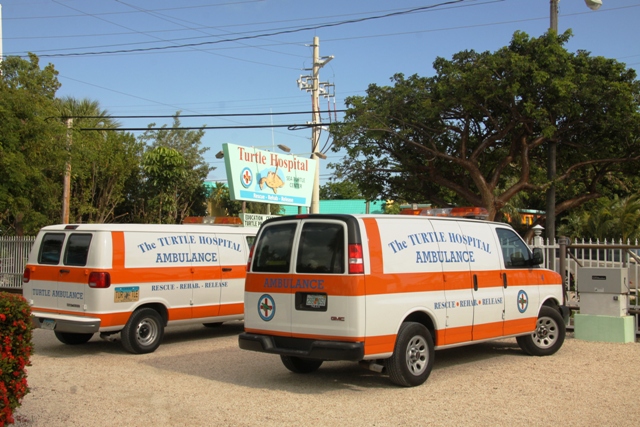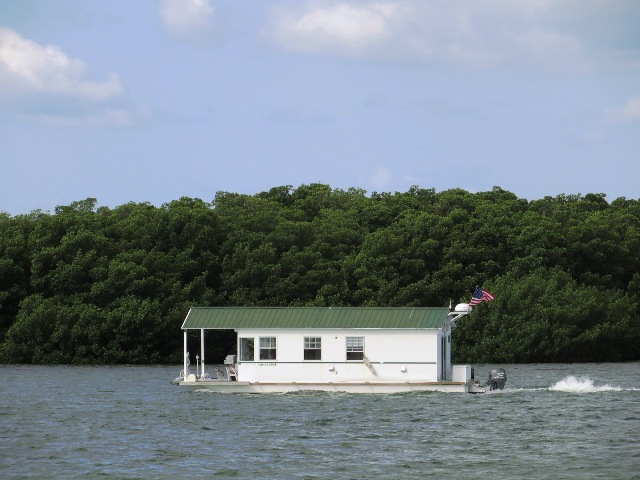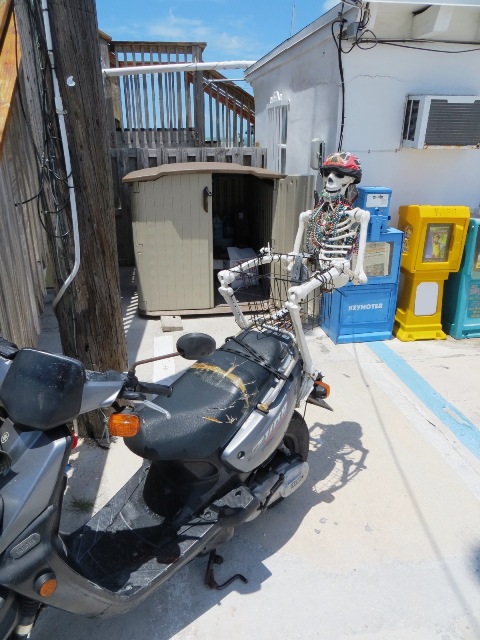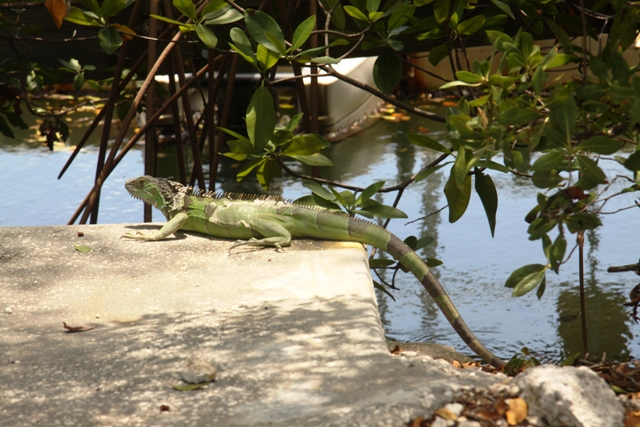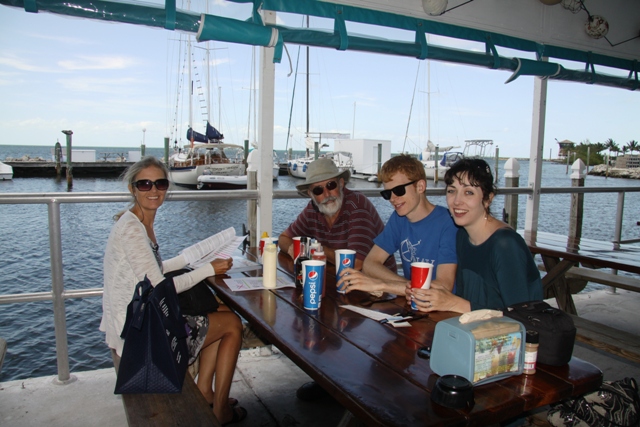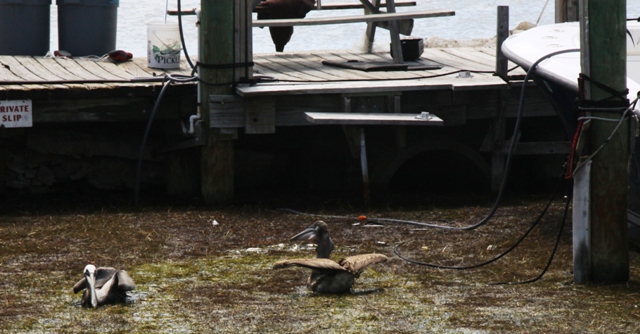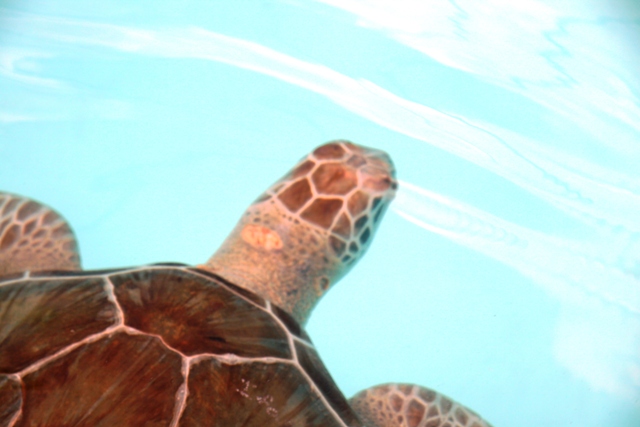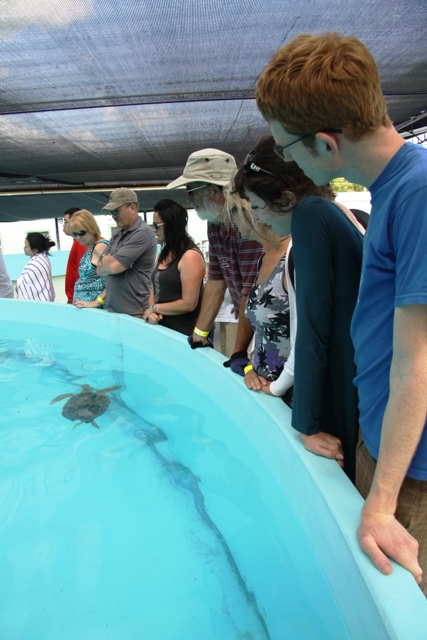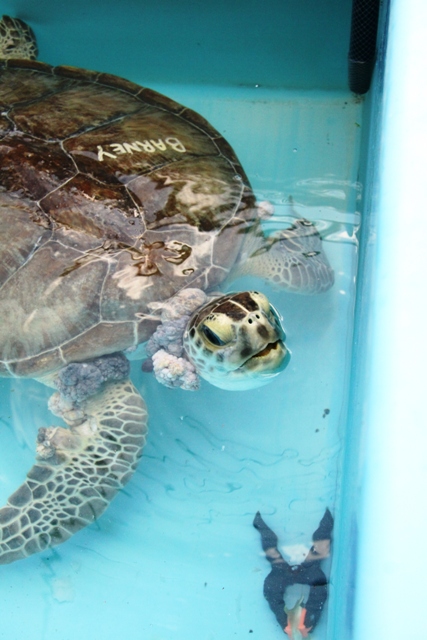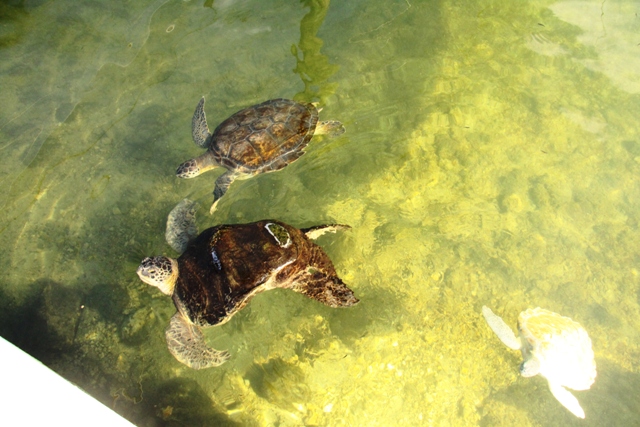3 May – Visiting time at the Turtle Hospital, Marathon

Today we went ashore to see the island after waking to see this very amusing houseboat sail by. All it needed was a picket fence around the porch at the front......
We walked from the marina and crossed Route 1 – the highway
that starts at Key West and goes all the way north to Canada. On the short walk
to a restaurant ‘Bayside’ we saw a large iguana, another invasive species here
and again as a result of irresponsible release of unwanted pets into the wild.
It is also legal to hunt them but we didn’t discover if they taste like
chicken.
We also saw this motorbike – strange people here too it
seems!
The restaurant was in a small fishing harbour and we watched
a juvenile pelican for the entire duration. It had a huge fish in its bill but
obviously wasn’t sure how to swallow it and when we left it was still
struggling.
Next stop, the Turtle Hospital. This facility operates
primarily a ‘Rescue, Rehab, Release’ facility but also keeps a population of turtles
that cannot survive in the wild, undertakes some research and has an
educational outreach programme. The small museum / reception area we waited in
until the tour began was excellent and had some lovely turtle earrings for
Claude to remember it by!
Interesting facts:
Turtles need a total of three functional flippers to survive in the wild – less and they have to stay. Often if they are hit by boats they are paralysed as the shells of all but the Leatherbacks are fused ribs with the spinal cord running close to the surface. This was one of their paraplegics, in the large tank we are all looking at.
Another problem that Green turtles in particular suffer from
is tumours from a papillovirus that usually affects the skin but sometimes
organs too. They become more prone when stressed by injury or pollution compromising
their immune systems. The hospital removes them when they can and apparently
treats the wounds with honey – a known anti-bacterial.
Final fact – Bubblebutt! When turtles are injured by boats it seems that their normal buoyancy mechanism is damaged, most likely from injuries to their lungs and the nerves that supply them. The first example of this was in this turtle called Bubblebutt. It is also known as floating turtle syndrome and these individuals can’t be released either. Bubblebutt has been there for 21 years.
They do glue weights to their shells so they can behave normally in captivity but growing shells mean the weights must be altered regularly- not possible for those that are released.
